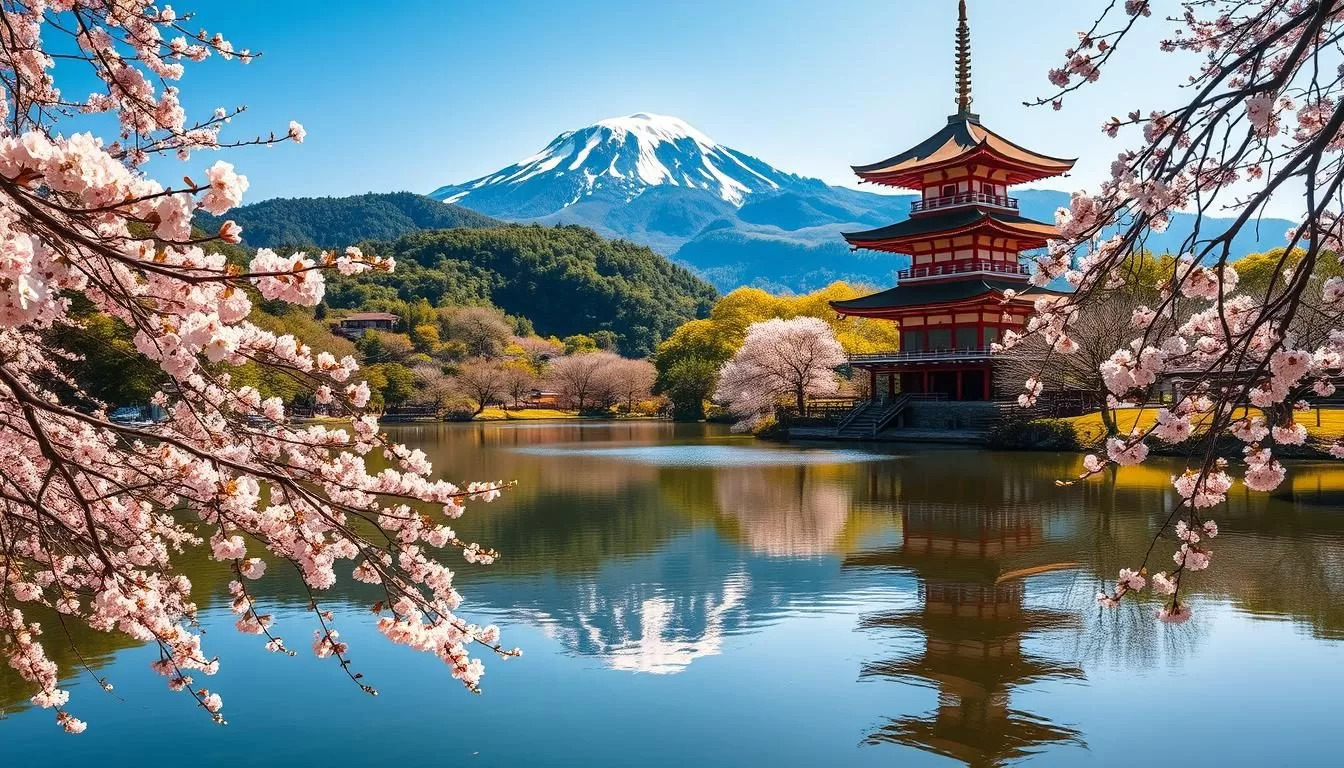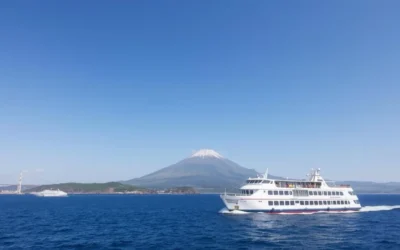✓ Accommodations✓ Flights✓ Rental Cars
Planning a trip to Shiga Prefecture requires understanding its distinct seasonal patterns to make the most of your travel experience. Nestled in central Japan, Shiga offers a unique blend of natural beauty, cultural heritage, and seasonal attractions.
With Lake Biwa, Japan’s largest freshwater lake, at its heart, Shiga’s climate creates a microclimate that sometimes differs from other Japanese regions. Each season transforms the prefecture in dramatic ways, from spring’s delicate cherry blossoms to summer’s vibrant festivals, autumn’s fiery foliage, and winter’s serene snowscapes.
To time your visit strategically and enhance your travel experience, it’s essential to consider the weather and seasonal events. This guide will help you determine the optimal time for your visit based on your preferences and tolerance for crowds.
Understanding Shiga Prefecture’s Climate
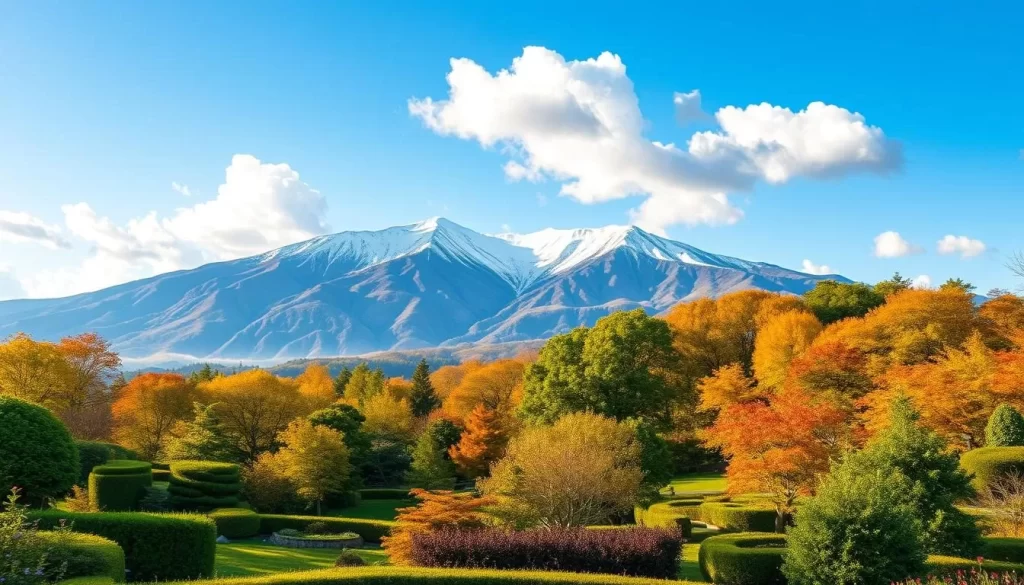
The climate in Shiga Prefecture is shaped by its geography, resulting in distinct seasonal variations that set it apart from other regions in Japan. You will experience a range of weather conditions during your visit, influenced by its inland location and the presence of Lake Biwa.
Geographic Location and Weather Patterns
Shiga Prefecture’s inland location gives it a more continental climate compared to coastal Japanese regions. This results in greater temperature variations between seasons and even between day and night. The presence of Lake Biwa moderates these extremes somewhat, but the prefecture still sees significant seasonal variation.
You can expect:
- More snowfall in the eastern mountainous areas, making it a consideration for winter travelers.
- Spring arriving slightly later in Shiga compared to southern Japanese regions.
- Summer humidity to feel less oppressive than in major urban centers, particularly in areas with good access to Lake Biwa’s cooling effects.
- Autumn foliage season to begin earlier in Shiga’s mountainous regions, offering an extended viewing window for nature enthusiasts.
How Shiga’s Climate Differs from Other Japanese Regions
Unlike coastal areas of Japan, Shiga’s climate is characterized by more temperature extremes – slightly colder winters and hotter summers than places like Osaka or Kyoto. While Tokyo and other coastal cities might experience milder winters, Shiga receives more snow, particularly in its eastern mountainous areas. This makes Shiga a unique place to visit during the winter season, offering a different experience from other parts of the country.
The “snow country” effect is less pronounced in Shiga than in regions along the Sea of Japan coast, but winter visitors should still prepare for snow, especially in higher elevations.
Spring in Shiga: Cherry Blossoms and Mild Temperatures
As spring unfolds in Shiga Prefecture, the landscape transforms into a vibrant tapestry of colors and festivities. This season is a perfect time to visit, with mild temperatures and the iconic cherry blossoms drawing visitors from across Japan and beyond.
March to May Weather Overview
Spring in Shiga Prefecture, spanning from March to May, is characterized by gradually warming temperatures, with average highs ranging from 12°C to 22°C (54°F to 72°F). This period is ideal for outdoor activities, as the weather is generally pleasant, making it perfect for exploring the region’s natural beauty and cultural attractions.
Cherry Blossom Viewing Spots Around Lake Biwa
Shiga Prefecture is renowned for its stunning cherry blossom viewing spots, particularly around Lake Biwa. Some of the most popular locations include:
- Ukawa Shinmeisha Shrine, known for its picturesque cherry blossom tunnel.
- Cherry blossom viewing along the lake’s shoreline, offering breathtaking views.
- The Hana Festa (Flower Festival) at Mizunomori Water Botanical Garden, showcasing a variety of spring flowers.
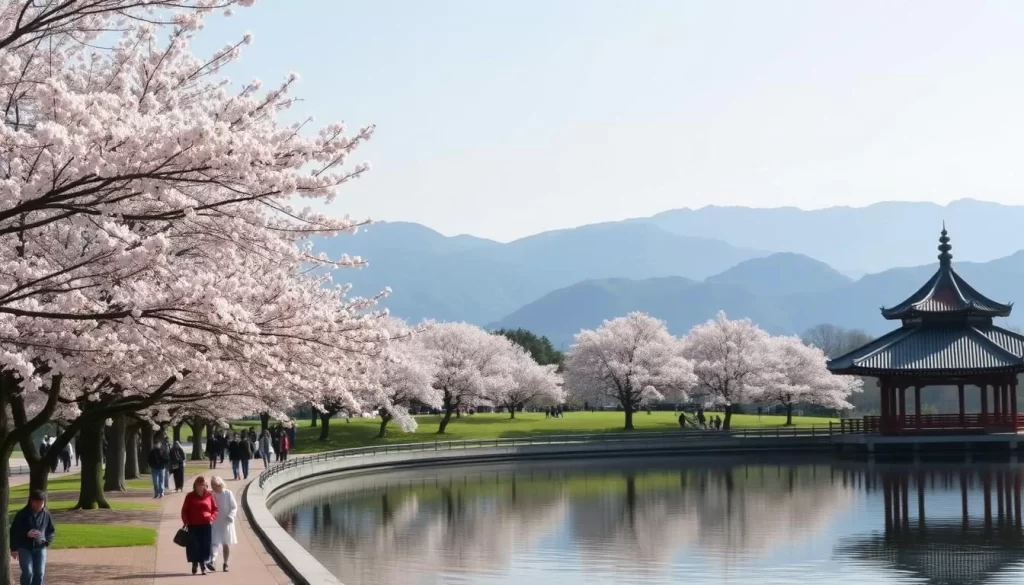
Spring Festivals and Events
Spring in Shiga is not just about the cherry blossoms; it’s also a time for numerous festivals and events. The Nagahama Hikiyama Festival, held in mid-April, is a highlight, featuring elaborate floats and kabuki performances by young boys. Another significant event is Omihachiman’s Sagicho Festival in March, which includes a spectacular fire ritual. Visitors can also experience the traditional spring purification ceremonies and other cultural events throughout the season.
| Event | Date | Description |
|---|---|---|
| Nagahama Hikiyama Festival | Mid-April | Elaborate floats and kabuki performances |
| Omihachiman’s Sagicho Festival | March | Spectacular fire ritual and traditional ceremonies |
| Hana Festa (Flower Festival) | Spring | Variety of spring flowers on display |
While Golden Week (late April to early May) is a popular time for domestic travel, resulting in larger crowds and higher prices, it is still a great time to experience the local culture and festivities. Planning your visit around these events can enhance your spring experience in Shiga Prefecture.
Summer Adventures: Navigating the Rainy Season and Heat
Summer in Shiga Prefecture is a season of adventure and cultural immersion. As the weather warms up, the region comes alive with vibrant festivals, exciting outdoor activities, and breathtaking scenery.
June to August Weather Patterns
June marks the beginning of summer in Shiga Prefecture, with temperatures gradually rising and humidity increasing. July and August are characterized by hot and humid weather, with occasional rain showers. The rainy season, which typically occurs in late June and early July, brings a welcome respite from the heat, but also requires visitors to be prepared for wet weather.
Lake Biwa Summer Activities
Lake Biwa is a hub of summer activity, offering a range of water sports, cruises, and lakeside events. You can enjoy swimming, kayaking, or paddleboarding on the lake, or simply relax on the beach and take in the stunning views. The surrounding hills and mountains also provide opportunities for hiking and exploring.
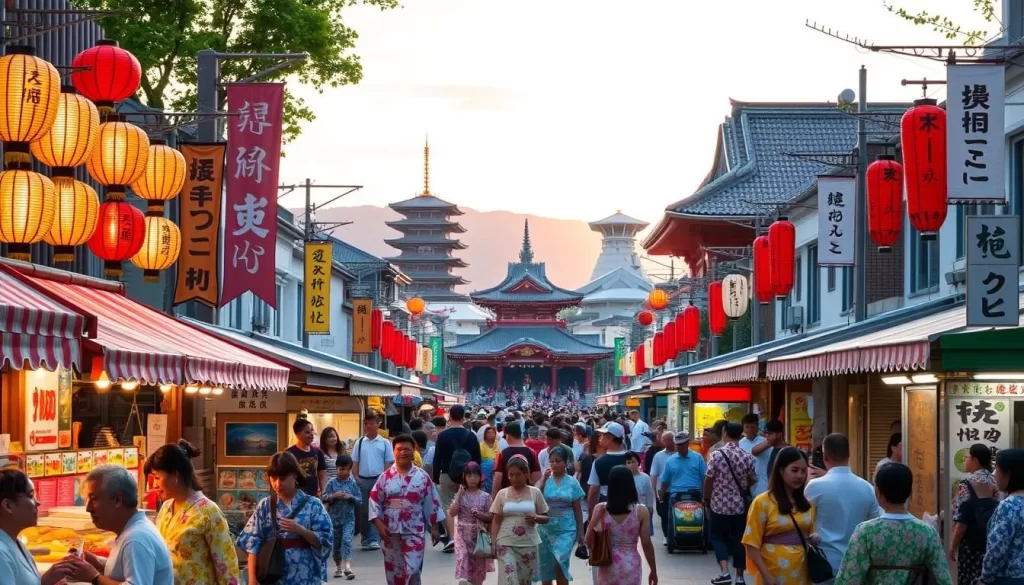
Summer Festivals and Fireworks Displays
Summer in Shiga Prefecture is synonymous with festivals and fireworks displays. The Otsu Festival in early August features traditional boat processions on Lake Biwa, colorful parades, and a spectacular fireworks display. The Lake Biwa Fireworks Festival, held in early August, is one of Japan’s largest fireworks displays, attracting crowds of up to 350,000 people. For a more relaxed experience, consider visiting in late June or early July, when the rainy season keeps many tourists away.
Other notable summer festivals include Nagahama’s Kita-Biwako Fireworks Festival and Obon festivals in mid-August, which honor ancestors with traditional dances, food stalls, and community celebrations. These events provide a unique glimpse into Japanese cultural practices and are definitely worth experiencing during your visit.
Autumn Colors: Shiga Prefecture’s Most Photogenic Season
As autumn descends upon Shiga Prefecture, the landscape transforms into a kaleidoscope of colors, making it a photographer’s paradise. The season brings a unique blend of natural beauty and cultural richness, making it an ideal time to experience the best of what Shiga has to offer.
September to November Weather Conditions
From September to November, Shiga Prefecture enjoys relatively dry and mild weather, making it an ideal time to visit Japan. November, in particular, is highlighted as one of the best times to visit, with comfortable temperatures and spectacular autumn colors across the region.
Best Spots for Fall Foliage Viewing
Shiga Prefecture is dotted with numerous spots perfect for fall foliage viewing. The area around Lake Biwa offers breathtaking views, with the changing leaves creating a picturesque landscape. Visitors can enjoy the vibrant colors at various temples and parks, making it a memorable experience.
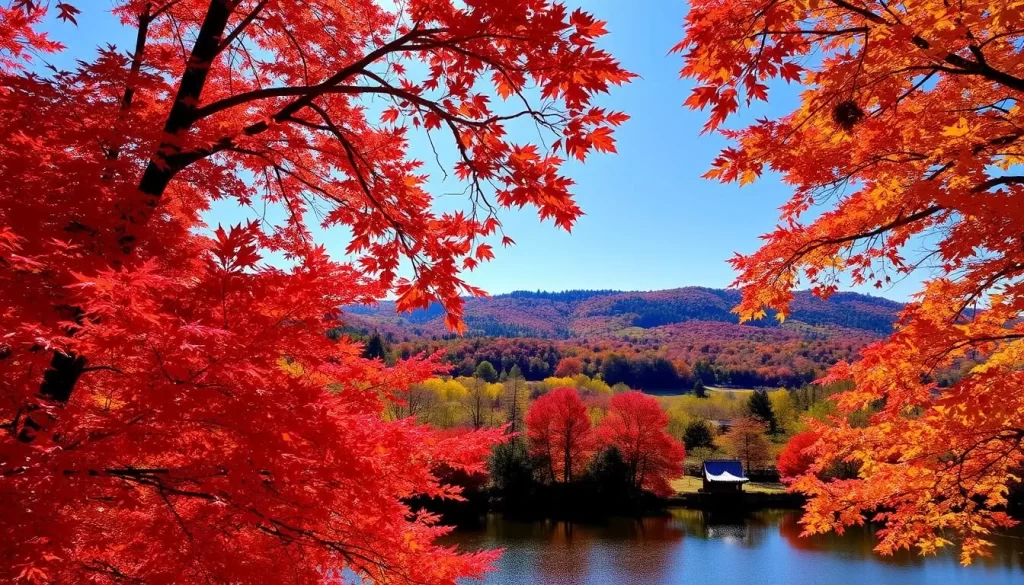
Autumn Harvest Festivals and Cultural Events
Autumn in Shiga is not just about the foliage; it’s also a season of harvest festivals and cultural events. The Nagahama Kurokabe Square Autumn Festival, Shiga’s rice harvest festivals, and the Biwako Autumn Food Festival are just a few examples of the events that celebrate the autumn harvest. These events offer a glimpse into traditional Japanese culture and are a great way to experience the local cuisine and traditions without the large crowds often associated with spring cherry blossom viewing.
| Event | Location | Description |
|---|---|---|
| Nagahama Kurokabe Square Autumn Festival | Nagahama | Seasonal decorations, local delicacies, and traditional performances |
| Shiga’s Rice Harvest Festivals | Various locations | Ceremonies thanking the gods for the harvest and demonstrations of traditional farming techniques |
| Biwako Autumn Food Festival | Around Lake Biwa | Regional specialties, including persimmon desserts, matsutake mushroom soup, and freshwater fish preparations |
Visiting Shiga Prefecture during the autumn season allows you to enjoy the attractions without the peak tourist crowds, making it a more relaxed and enjoyable experience. Whether you’re interested in nature, culture, or cuisine, Shiga Prefecture in autumn has something to offer.
Winter Escapes: Snow, Skiing, and Hot Springs
Winter in Shiga Prefecture is a magical experience, offering a mix of snow sports, relaxing onsen, and breathtaking scenery. As you plan your trip, consider the unique attractions and activities that this season has to offer.
December to February Weather Overview
During the winter months, Shiga Prefecture experiences a serene and cold climate, with temperatures often dropping below freezing. December marks the beginning of winter, with average temperatures ranging from 2°C to 10°C (36°F to 50°F). January is the coldest month, with temperatures sometimes falling below 0°C (32°F). February remains chilly, but the cold starts to ease towards the end of the month.
Skiing and Winter Sports in Shiga Highlands
Shiga Highlands is a renowned destination for skiing and other winter sports. The area boasts extensive ski slopes catering to all skill levels, from beginners to experts. You can enjoy skiing, snowboarding, and ice skating in a picturesque setting surrounded by snow-covered trees. The Shiga Highlands ski resort is one of Japan’s most popular, offering a variety of courses and modern facilities.
For a unique winter experience, visit the Shirahige Shrine to see its famous “floating” torii gate on Lake Biwa, which becomes particularly photogenic when surrounded by snow.
Onsen Experiences and Winter Illuminations
Winter is an ideal time to visit an onsen (natural hot spring) in Shiga Prefecture. Ogoto Onsen, located on the western shore of Lake Biwa, is a historic hot spring resort with numerous ryokan offering day-use and overnight bathing experiences. Soaking in an onsen is a perfect way to warm up and relax after enjoying winter sports.
The winter illumination events at Nagahama’s historic district are not to be missed. Thousands of lights transform the city into a magical wonderland, creating a romantic atmosphere that attracts couples and photographers alike.
| Activity | Location | Best Time |
|---|---|---|
| Skiing/Snowboarding | Shiga Highlands | December to February |
| Onsen Experience | Ogoto Onsen | Anytime during winter |
| Winter Illuminations | Nagahama Historic District | December to February |
Be aware that during the New Year holiday period (December 29 to January 4), many businesses and attractions may operate on limited schedules or close entirely. However, major hotels and onsen resorts remain open to accommodate the holiday travel rush.
Shiga Prefecture, Japan: Best Months for a Weather-Savvy Trip
For a weather-savvy trip to Shiga Prefecture, understanding the seasonal patterns and peak tourist periods is essential. This knowledge will help you plan your visit during the best months for your preferred activities while avoiding the crowds.
Optimal Travel Months for Different Activities
The best time to visit Shiga Prefecture depends on your interests. If you’re looking for mild temperatures and lush vegetation, the remainder of May after Golden Week is ideal. For summer activities on Lake Biwa, July and August are the peak months, but be prepared for crowds during Obon week in mid-August. Autumn foliage is best viewed from September to November, with September offering a good balance of weather and smaller crowds after the Obon holiday.
| Activity | Best Months | Notes |
|---|---|---|
| Cherry Blossom Viewing | March to April | Avoid weekends for fewer crowds |
| Lake Biwa Summer Activities | July to August | Peak tourist season; Obon week is busiest |
| Autumn Foliage | September to November | September is less crowded after Obon |
Avoiding Peak Tourist Seasons and Crowds
To avoid the heaviest crowds, plan your trip around Japan’s major holiday periods: Golden Week (late April to early May), Obon (mid-August), and the New Year holiday (December 29 to January 4). Golden Week is particularly busy, with accommodations booking up months in advance and prices increasing significantly. Consider visiting in late June, when the rainy season may deter some tourists but often features brief showers rather than constant rain. Alternatively, September is a good time to visit as it offers a balance of good weather and reduced crowds after the Obon holiday.
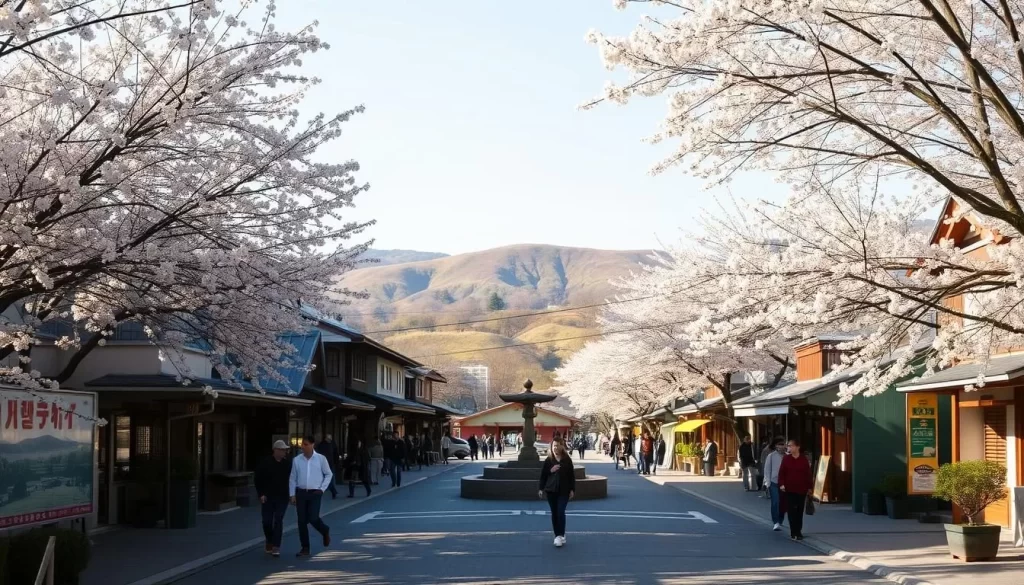
By planning your trip during the less crowded periods and being mindful of the peak tourist seasons, you can have a more enjoyable and relaxed experience in Shiga Prefecture.
Practical Weather Considerations for Travelers
To ensure a smooth and enjoyable trip to Shiga, it’s essential to consider the practical implications of the local weather. Understanding the seasonal weather patterns can help you prepare appropriately and make the most of your visit.
What to Pack for Each Season
Packing the right clothing for your visit to Shiga Prefecture is crucial due to its varied climate. In the spring, bring light clothing for mild temperatures, while in the summer, prepare for hot and humid weather. Autumn requires layers for cooler mornings and evenings, and winter demands warm clothing, including a heavy coat, gloves, and hat, especially if you plan to enjoy winter sports.
| Season | Weather | Packing Essentials |
|---|---|---|
| Spring | Mild temperatures | Light clothing, umbrella |
| Summer | Hot and humid | Lightweight, breathable clothing, sunscreen |
| Autumn | Cooling temperatures | Layers, light jacket |
| Winter | Cold, potential snow | Warm clothing, heavy coat, gloves, hat |
Transportation Tips During Extreme Weather
During extreme weather conditions, it’s vital to plan your transportation in Shiga Prefecture carefully. In the winter, while major train lines are generally reliable, local bus services in mountainous areas may be reduced. During the rainy season and typhoon season, check the latest weather forecasts and transportation updates regularly to avoid disruptions.
Conclusion
As we’ve explored, Shiga Prefecture’s diverse climate and geography make it an attractive destination year-round. Each season brings its unique beauty and attractions, from spring’s delicate cherry blossoms to winter’s serene snow-covered landscapes.
For most travelers, the ideal times to visit are mid to late May and October to early November, when comfortable temperatures combine with stunning natural beauty and manageable crowd levels. If you’re drawn to specific natural phenomena or festivals, plan your trip accordingly to make the most of your experience.
Remember, there’s no single “best time” to visit Shiga Prefecture; the ideal time of year depends on your personal preferences and desired activities. Whether you’re interested in the cultural richness of Shiga’s festivals, the natural beauty of Lake Biwa’s changing seasons, or its historical significance, timing your visit thoughtfully will enhance your travel experience in this often-overlooked gem of central one Japan.
The above is subject to change.
Check back often to TRAVEL.COM for the latest travel tips and deals.
